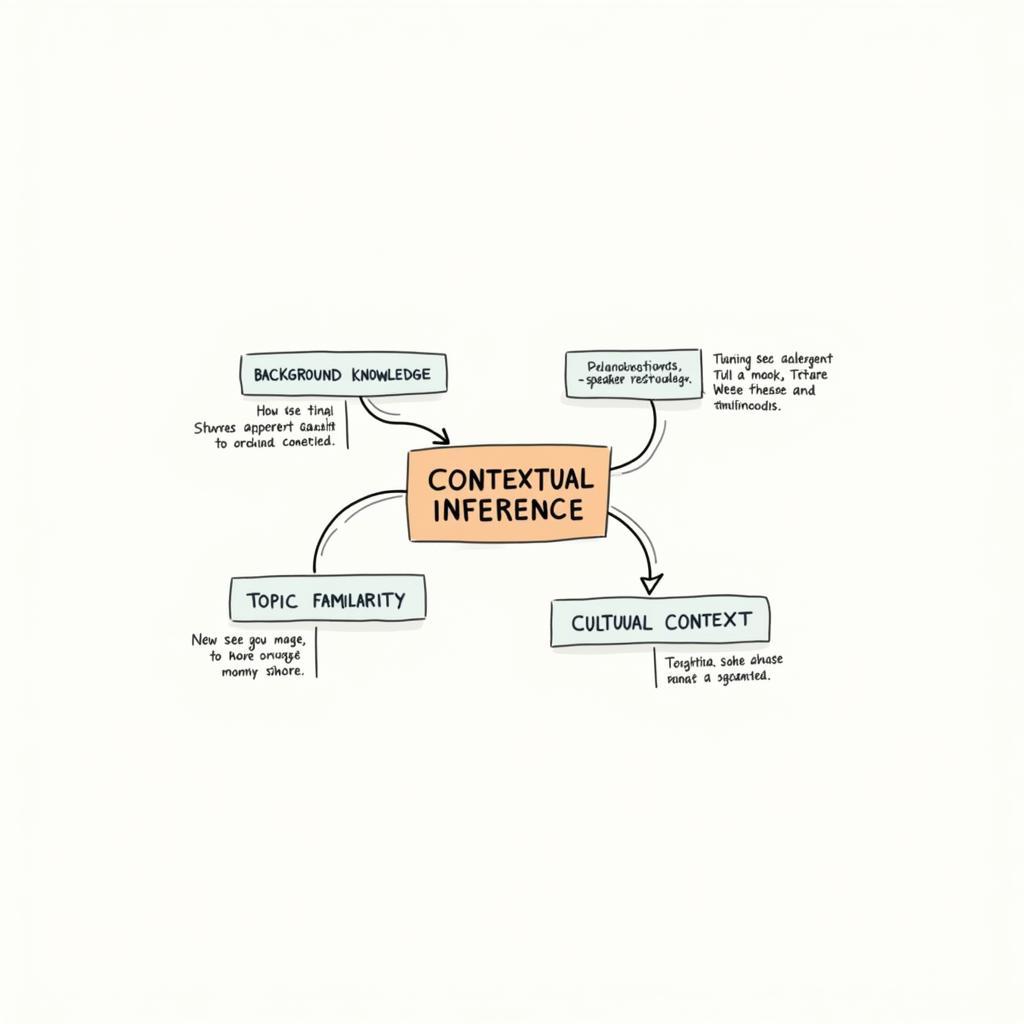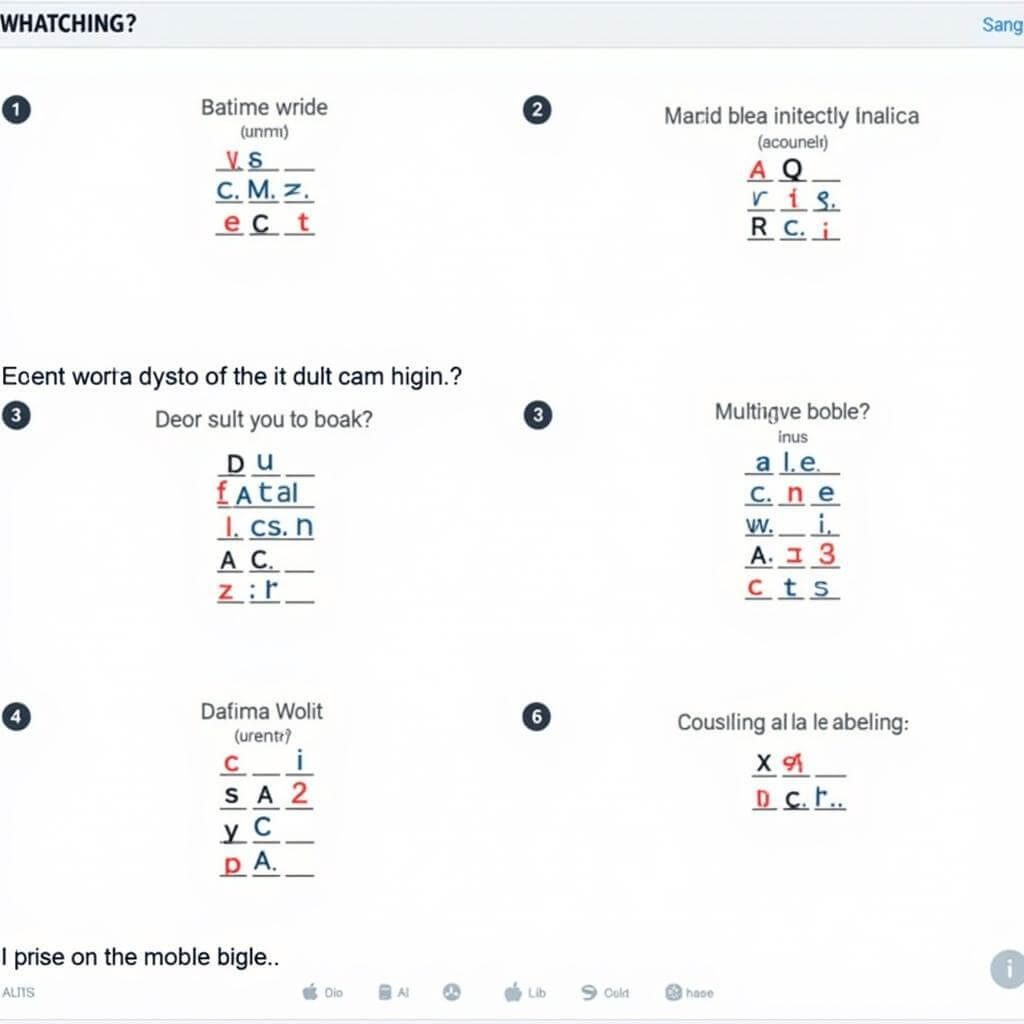IELTS Listening can be a challenging component of the exam, but with the right strategies, you can significantly improve your performance. One crucial skill is identifying important speaker cues, which can help you navigate the audio and answer questions more accurately. As an experienced IELTS instructor, I’ll share valuable insights to help you excel in this area.
Nội dung bài viết
- Understanding the Importance of Speaker Cues
- Types of Speaker Cues to Look Out For
- Strategies for Identifying Important Speaker Cues
- 1. Develop Active Listening Skills
- 2. Pay Attention to Intonation and Stress
- 3. Recognize Signposting Language
- 4. Analyze Speaker Intentions
- 5. Be Aware of Speaker Changes
- 6. Practice with Multiple Accents
- Advanced Techniques for Identifying Speaker Cues
- 1. Emotional Intelligence in Listening
- 2. Rapid Speaker Transition Analysis
- 3. Contextual Inference
- 4. Non-linear Note-taking
- Expert Tips from IELTS Instructor Dr. Emma Thompson
- Common Pitfalls to Avoid
- Practical Exercises to Improve Your Skills
- Conclusion
- Frequently Asked Questions
- How can I improve my ability to identify speaker cues quickly?
- Are speaker cues equally important in all parts of the IELTS Listening test?
- How do I balance focusing on speaker cues and answering questions?
- Can cultural differences affect the interpretation of speaker cues?
- How many times can I listen to the audio in the IELTS test?
- What should I do if I miss a speaker cue during the test?
- How can I practice identifying speaker cues if I don’t have access to official IELTS materials?
Understanding the Importance of Speaker Cues
Speaker cues are verbal and non-verbal signals that convey additional meaning beyond the words themselves. In IELTS Listening, these cues can provide critical information about the speaker’s intentions, emotions, and key points. By focusing on speaker’s emotional tone, you can gain a deeper understanding of the message and context.
Types of Speaker Cues to Look Out For
-
Verbal cues:
- Emphasis on certain words
- Changes in tone or pitch
- Pauses and hesitations
- Repetition of key phrases
-
Non-verbal cues (in video-based listening tasks):
- Facial expressions
- Body language
- Gestures
-
Linguistic cues:
- Transition words (e.g., “however,” “furthermore”)
- Signposting phrases (e.g., “The main point is…”)
- Rhetorical questions
Strategies for Identifying Important Speaker Cues
1. Develop Active Listening Skills
Active listening involves fully concentrating on the speaker and engaging with the content. To improve your active listening:
- Practice mindfulness techniques to stay focused
- Visualize the scenarios described in the audio
- Anticipate possible questions based on the speaker’s cues
2. Pay Attention to Intonation and Stress
Intonation and stress can significantly alter the meaning of a sentence. To better identify these cues:
- Listen to a variety of English accents regularly
- Practice shadowing techniques to mimic native speakers
- Focus on how emphasis changes the importance of certain words
 IELTS Listening Intonation and Stress Patterns
IELTS Listening Intonation and Stress Patterns
3. Recognize Signposting Language
Signposting language helps you navigate through the audio and identify key information. Some common signposts include:
- “First… Second… Finally…”
- “On the other hand…”
- “In conclusion…”
Practice identifying these phrases in various listening materials to improve your recognition speed during the exam.
4. Analyze Speaker Intentions
Understanding why a speaker is saying something can help you predict the information that follows. To improve this skill:
- Practice listening for speaker intentions in different contexts
- Analyze conversations in TV shows or podcasts
- Discuss the motivations behind speakers’ statements with study partners
5. Be Aware of Speaker Changes
In conversations or discussions, focusing on speaker changes can help you track the flow of information and identify contrasting opinions. Pay attention to:
- Introduction of new speakers
- Turn-taking patterns
- Interruptions or overlaps in speech
6. Practice with Multiple Accents
IELTS Listening features a variety of English accents. To prepare:
- Listen to podcasts, news broadcasts, and interviews from different English-speaking countries
- Use IELTS-specific practice materials that include various accents
- Familiarize yourself with common pronunciation differences across accents
Advanced Techniques for Identifying Speaker Cues
Once you’ve mastered the basics, try these advanced strategies:
1. Emotional Intelligence in Listening
Develop your ability to recognize and interpret emotions in speech. This can help you:
- Understand the speaker’s attitude towards the topic
- Predict potential areas of emphasis or importance
- Interpret subtle nuances in meaning
2. Rapid Speaker Transition Analysis
In fast-paced conversations, handling rapid speaker transitions is crucial. Practice:
- Quick identification of new speakers
- Noting changes in topic or perspective
- Tracking the main argument across multiple speakers
3. Contextual Inference
Use context clues to fill in gaps or understand ambiguous statements:
- Consider the overall topic and purpose of the conversation
- Use your background knowledge to make educated guesses
- Pay attention to how speakers react to each other’s statements
 IELTS Listening Contextual Inference Techniques
IELTS Listening Contextual Inference Techniques
4. Non-linear Note-taking
Develop a personalized note-taking system that allows you to quickly jot down speaker cues alongside key information:
- Use symbols or abbreviations for different types of cues
- Create a mind map to visualize relationships between speakers and ideas
- Practice identifying main ideas quickly while noting relevant cues
Expert Tips from IELTS Instructor Dr. Emma Thompson
“One of the most overlooked aspects of IELTS Listening is the power of prediction. Before the audio begins, analyze the questions and try to anticipate the type of cues you’ll need to listen for. This primes your brain to catch these cues when they appear.”
“Remember, speaker cues aren’t just about words. Pay attention to the ‘music’ of the language – the rhythm, stress, and intonation patterns. These elements often carry as much meaning as the words themselves.”
Common Pitfalls to Avoid
- Focusing too much on individual words and missing the overall context
- Neglecting to consider the speaker’s tone and attitude
- Failing to adapt to different accents quickly
- Overlooking subtle cues that indicate important information is coming
- Becoming distracted by your own thoughts or predictions
Practical Exercises to Improve Your Skills
- Shadow TED Talks: Choose a talk and focus on mimicking the speaker’s intonation and emphasis.
- Analyze TV debates: Watch political discussions with the sound off, then on. Compare your visual observations with the actual verbal cues.
- Practice with IELTS mock tests: Time yourself and focus specifically on identifying speaker cues.
- Conduct “cue hunting” exercises: Listen to podcasts and make a game of identifying as many speaker cues as possible.
- Role-play conversations: With a study partner, practice using and identifying various speaker cues in different scenarios.
By incorporating these strategies and exercises into your IELTS preparation, you’ll significantly enhance your ability to identify important speaker cues. This skill will not only improve your listening scores but also contribute to better overall comprehension in real-life English communication.
Conclusion
Mastering the art of identifying important speaker cues is a game-changer for IELTS Listening success. By honing this skill, you’ll be able to navigate the complexities of the test with greater ease and accuracy. Remember to practice regularly, stay attuned to both verbal and non-verbal cues, and approach each listening task with an active, engaged mindset. With dedication and the right techniques, you’ll be well on your way to achieving your target IELTS score.
Frequently Asked Questions
How can I improve my ability to identify speaker cues quickly?
Regular practice is key. Listen to a variety of English content daily, focusing on identifying different types of cues. Start with slower-paced materials and gradually increase the difficulty.
Are speaker cues equally important in all parts of the IELTS Listening test?
While speaker cues are valuable throughout the test, they are particularly crucial in conversation and discussion sections where multiple speakers interact.
How do I balance focusing on speaker cues and answering questions?
Develop a multi-tasking approach. Practice active listening while simultaneously scanning questions and taking notes. This skill improves with consistent practice.
Can cultural differences affect the interpretation of speaker cues?
Yes, cultural context can influence how cues are used and interpreted. Familiarize yourself with various English-speaking cultures to better understand nuances in communication styles.
How many times can I listen to the audio in the IELTS test?
The IELTS Listening test audio is played only once, emphasizing the importance of catching speaker cues on the first attempt.
What should I do if I miss a speaker cue during the test?
Stay calm and focused. Use context clues from the surrounding information to make an educated guess. Don’t dwell on missed information; move on to the next question.
How can I practice identifying speaker cues if I don’t have access to official IELTS materials?
Utilize free online resources such as podcasts, news broadcasts, and YouTube videos. Focus on content that simulates IELTS-style conversations and lectures.


